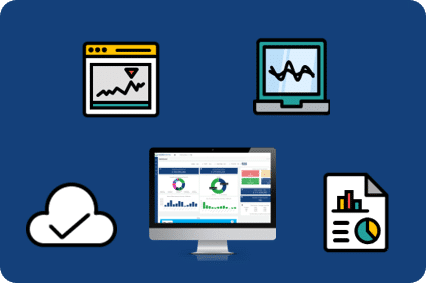BLOGS
Fuel Your Lease Accounting Implementation Project With Lease Accounting Software

The new lease accounting changes—IFRS 16 Leases—will require lessees to account for their leases under one accounting treatment. All leases will be brought on balance sheet, right of use assets will be recognised and also lease liabilities arising from these agreements.
The reason for the lease accounting changes is to establish greater transparency of financial statements through the recognition of all and any lease commitments on an entity’s balance sheet.
It is estimated that one in two listed companies will be affected by the new standard. As it currently stands, listed companies under IFRS and US GAAP jurisdiction have an estimated $3.3 trillion worth of leased assets and commitments, of which the vast majority (85%) are not included on their balance sheets. This means that worldwide some $2.8 trillion in lease commitments will have to be recognised and accounted for on balance sheets.
Despite adoption of the new standard being daunting for many companies, businesses can benefit by using the transition to implement advanced lease accounting software.
Beginning The Process With A Current Active Lease Portfolio Review
Enterprises are required to begin their impact analysis with a review of their current active lease portfolio. This process of lease collection and review has been flagged by accounting professionals as one of the most pressing concerns when beginning the process towards compliance. Although the International Accounting Standards Board (IASB) has offered reliefs to limit the time and cost burdens of this process, companies will probably need to collect information on all their leases in order to identify to what extent they will be affected, along with the reliefs best suited to their leasing activity.
The upside of this data review process is that companies will likely gain a clearer visualisation of their lease expenses, lease records, audits and savings opportunities. This will allow them to reap collateral benefits in optimised lease contract and leased asset management in the long-term. When complete, these insights can lead to better managerial decision-making and cost savings which, in turn, can generate a return on investment of the costs required to comply with IFRS 16.
The Opportunity For Lease Accounting Software
A number of solutions are available to help businesses reduce the costs and time they will spend on data mining and analysis demanded by the new accounting changes. These solutions include specialised leasing software platforms that are able to help companies centralise their lease portfolio into one secure and manageable system. This will ease the pressure of this transitional period considerably and provide the added benefit of improving long-term lease management practice.
For instance, a pioneering solution has been developed by Innervision that will significantly reduce the burden of transitioning to the new lease accounting standards. Innervision’s intuitive and proven lease accounting software, LOIS, is able to collate, centralise, analyse and report on all your active lease agreements. This not only takes much of the headache out of the active lease portfolio review but can also help entities secure savings now and in the long-term.
Getting Familiar With The Fundamentals Of Lease Accounting Software
When looking for best-in-class lease software able to ease the transition through the new lease accounting changes, look only at software that is both a lease management platform and a lease accounting reporting tool. Both features will be needed to put your company in complete control of its entire lease portfolio.
You should be able to track, manage and optimise all aspects of your global lease portfolio from one unified platform. This includes new lease arrangements and end of lease management, through every aspect of transitioning to the new lease accounting standards. You will also discover efficiencies and savings opportunities within your lease portfolio.
These are the fundamental features of best-in-class lease accounting and management software that you should never compromise on:
Lease Accounting Reporting
Your software platform should allow you to generate comparative reports compliant with current and future accounting standards (IFRS 16 and FASB Topic 842). You should be able to compare the effect of the new lease accounting changes on your balance sheet and Profit and Loss Statements with ease.
Dashboard Visualisation
You will need to have a real-time view of the key data from your lease portfolio, including lease expiry, outstanding liabilities and lease value. This feature ensures you will be able to proactively manage your portfolio for compliance and maximum efficiencies.
Tailored Reporting
Look for a powerful built-in Business Intelligence reporting package that will enable reports to be designed to your specific requirements. This will be necessary with the new leasing standards, in order to generate essential information in your chosen format, when you want it, at the click of a button.
Centralise and Save
When managing a lease portfolio, there is often potential for cost avoidance. It becomes easy to optimise your portfolio and simultaneously drive massive savings and ROI by storing and using all relevant lease information in one secure and unified platform.
Scalability
Make sure the lease accounting software you’re looking at allows you to produce reports on your lease portfolio using the current IAS 17 leasing guidelines and the recently announced new global lease accounting standards. Check that your software is able to provide comparisons between each version, and give you a clear indication of how the new standards will affect your fiscal statements.
If you would like to find out more, download the brochure which explains topics like: the main changes of IFRS 16, challenges of implementation, why you need lease accounting software, and you get to meet LOIS, along with its features and output reports:










